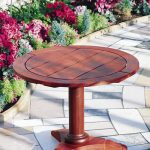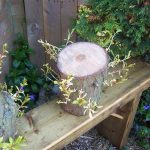We may receive a commission when you use our affiliate links. However, this does not impact our recommendations.
I made some cavetto moulding for a version of The Schoolbox I’m building. And because a cavetto is one of the easiest mouldings to make with a round plane, I decided to demonstrate the basics of laying out this moulding using a No. 4 plane.
Cavetto, which means “to hollow,” is sometime called a simple cove moulding. Some people also will call it a scotia, though that technically is a different shape. Check out the Wikipedia entry on mouldings to learn more about the names of the basic shapes.
The whole process to make this stick of moulding was less than five minutes. And, best of all, no sanding.
— Christopher Schwarz
Do you have a handplane ‘problem?’
I do. And that’s what drove me to write the book “Handplane Essentials,” a honkin’ big made-in-America volume that is a brain dump on handplanes: selecting, tuning and using them. It’s available in our store, with free domestic shipping.
My moulding planes are from Old Street Tools (formerly Clark & Williams). They are worth the wait.
I also am fond of those made by M.S. Bickford, and have a few fill-in sizes on order from him now.
Here are some supplies and tools we find essential in our everyday work around the shop. We may receive a commission from sales referred by our links; however, we have carefully selected these products for their usefulness and quality.









Is anyone else having trouble seeing the videos on an iPad now? I have not been able to view them for a while now.
OK… just how much banjo music can one man have?
🙂
Jonathan
=======================
Your videos have encouraged me to lean more & more toward hand work my friend.
My wife doesn’t appreciate your effort$….but I have !
Thanks Chris.
Nice. It’s always helpful to show folks how quickly these things can actually be accomplished.
I’m a fan of starting to remove the waste with a rabbet plane, which is much easier to steer than the molding plane, giving you two tips on the resulting rabbet to help guide the round plane. M.S. Bickford’s blog has been going into all the cool ways you can do this to help start out some fairly complex moldings.
It’s probably not really an issue with a molding consisting of one profile.
Nice demo. It would have taken me longer just to find the right router bit, much less set it up. I noticed you held the plane at varying angles with each pass, presumably to focus the cut where more material needed to be removed. Don’t know why but I was always under the impression that these planes had to be held at a consistent angle throughout the cut until the final profile was reached but after thinking about it, I guess that really only applies to “sprung” planes. By the way, your recent mention of the Stanley 45 prodded me to order one and I received it in the mail yesterday in excellent shape and with all cutters and parts. My gawd what a piece of engineering. It delights the eye just to look at it but I can’t wait to take it to the bench and put it through its paces. It wasn’t cheap (what decent hand plane is these days) but the price was fair and I have yet to regret buying a tool based on a recommendation of yours. Thanks once again Chris.